Dreadbox’s latest synth bridges the gap between affordability and high-end analogue goodness. Greg Scarth finds out what it has to offer.
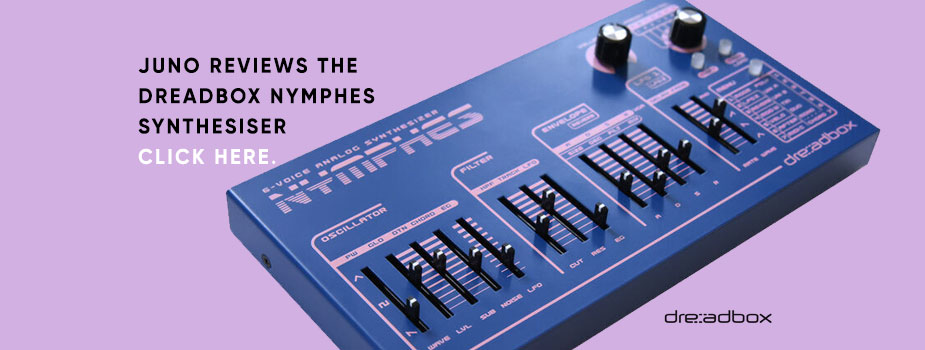
The concept of Dreadbox’s Nymphes synth is bold, to put it mildly. This, we’re told, is an analogue synth designed to bring happiness during the pandemic, inspired by chthonic demi-goddesses and dedicated to abused and oppressed women. It’s debatable whether any instrument could ever live up to those ambitions, but on a more functional level the Nymphes aims to offer high-quality analogue polyphony at an affordable price. A slightly more prosaic goal, certainly, but one which we can say without doubt Dreadbox have achieved here.
The architecture of the Nymphes module is straightforward, and immediately reminiscent of early 80s Roland Juno synths. The compact, metal-cased module houses a six-voice analogue synth engine, with each voice having one VCO, two envelope generators, one LFO, a 24 dB/oct resonant low-pass filter and a 6 dB/oct high-pass filter. There’s preset memory, full MIDI support over USB or DIN (via an adaptor), multiple playing modes and a built-in digital reverb.
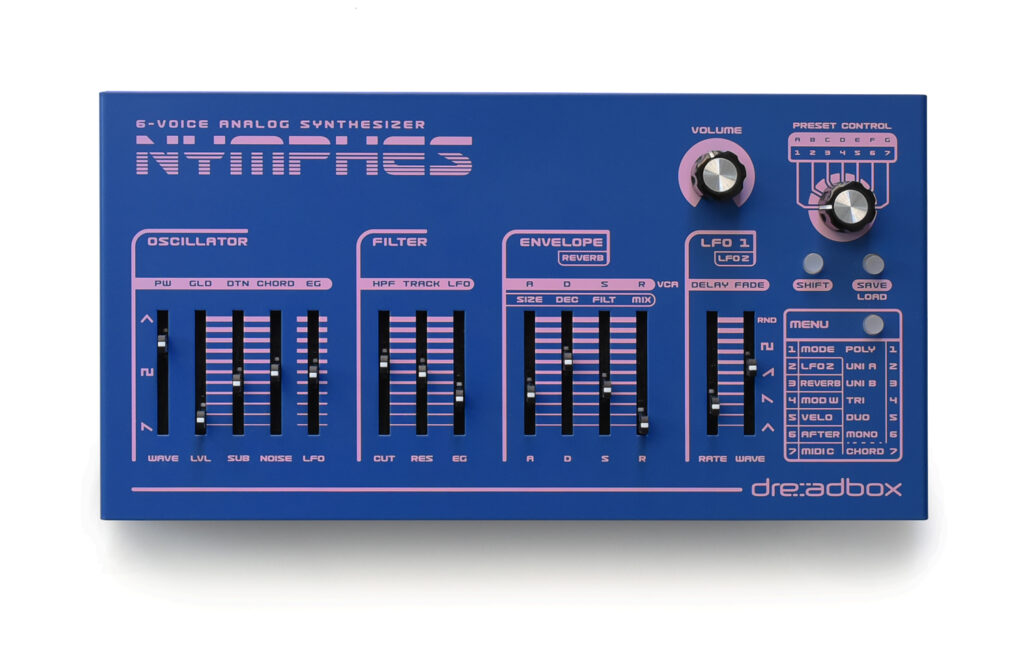
The Nymphes has 14 sliders on the front panel to access and adjust parameters, which make it immediately fun to play with. The oscillator section alone provides a lot of sonic options, with a waveform slider allowing you to morph between triangle, pulse and sawtooth waves, plus a sub-oscillator and noise source for each voice. The sound of the Nymphes soon reveals itself to be quite different to the obvious Roland Juno comparisons, capable of doing similar things in terms of simple analogue fatness and simple-but-effective pad sounds, but also getting much more raw and nasty thanks to snappy envelopes and a delightfully naughty filter section which is happy to self-oscillate and track with reasonable accuracy.
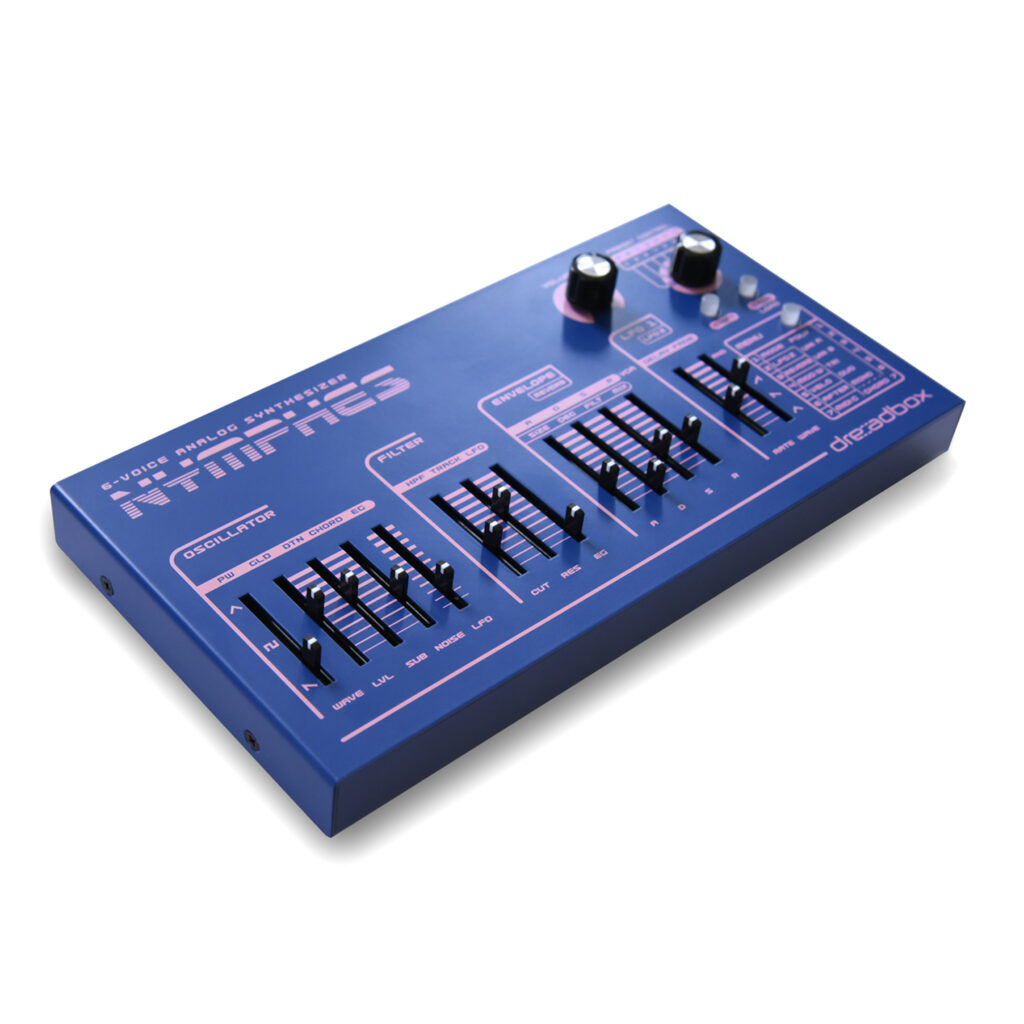
Once you’ve explored the basic functions of each slider, as marked below each control, the Nymphes’s features reveal themselves in quite a logical fashion via use of the shift button to access the parameters above each slider. From here, there are deeper functions accessed via a series of menus. It might seem slightly intimidating at first, but it’s all quite easy to get to grips with and explained well by the printed instructions and accompanying YouTube tutorials. Accessing some of the more advanced features, such as MIDI or chord settings, is undeniably a little fiddly, but thought has gone into ensuring that most commonly used parameters are quickly and easily accessed with minimal fuss. Once you’ve figured out how to access those deeper options, the modulation power of the Nymphes reveals itself as a real strength, with the option to modulate every parameter.
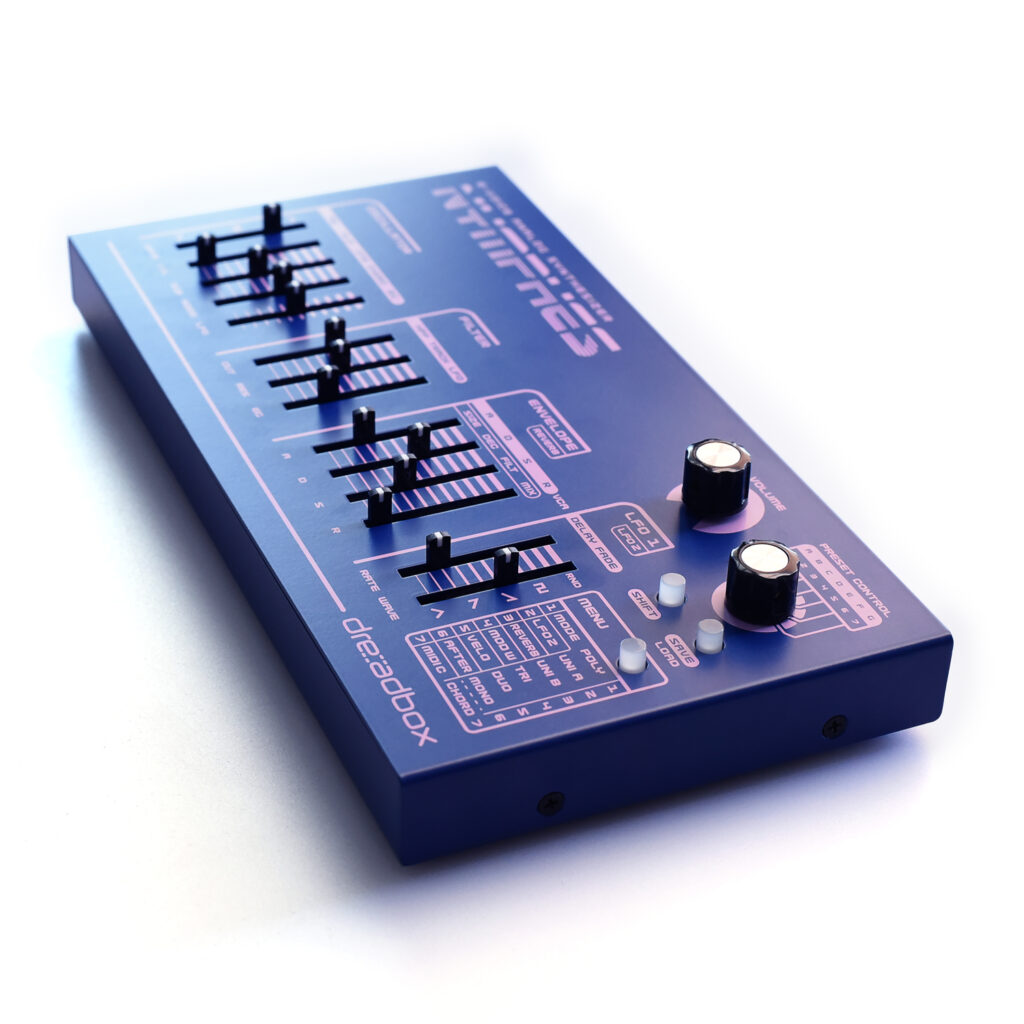
The other major strength of the Nymphes comes via the six play modes, accessed via the rotary switch and a sub-menu. The default setting is a polyphonic mode with six-note polyphony and one oscillator per note. From there, you can move into two unison modes (monophonic, six or four oscillators per note), triphonic mode (three-note polyphony, two oscillators per voice), duophonic mode (two voices, three oscillators each) or monophonic (one voice, one oscillator). These modes prove surprisingly different in terms not just of sound but of how they make you approach sound design, pushing you in different directions. The same menu is where you can also access chord editing mode, with chords being accessible via the fourth slider when in unison, duo or tri mode.
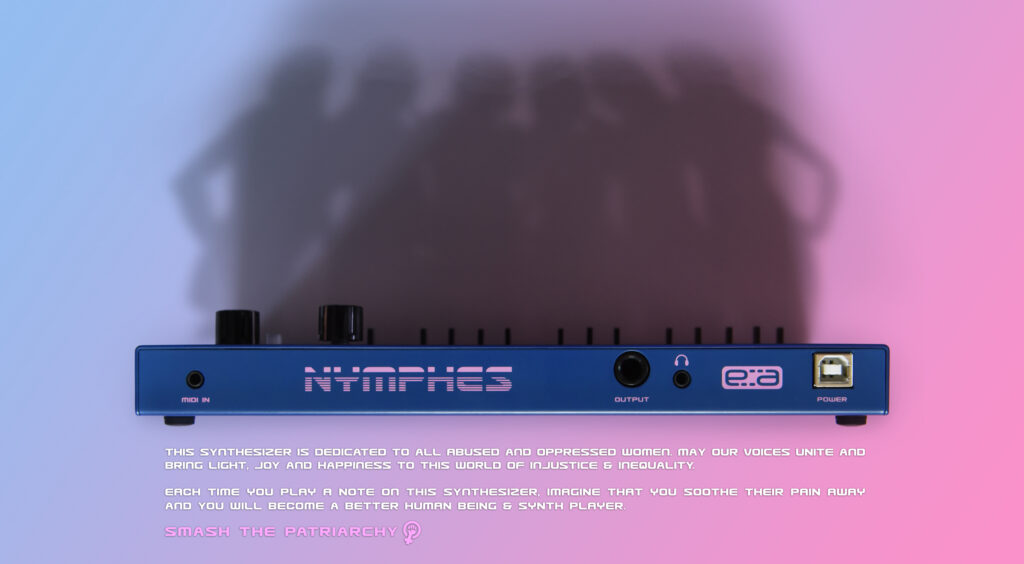
It’s always tricky to compare value for money across different brands, and Dreadbox’s status as a fairly niche, boutique operation means you’ll always pay a little more than you would from a major manufacturer. The Nymphes is more expensive than the excellent four-voice Korg Minilogue, for instance, but to put them side by side is a case of comparing apples with oranges; the Nymphes might lack a keyboard and some of the beginner-friendly feel of the Minilogue, but it’s got more voices and it feels more special. It’s impossible to say one’s ‘better’ than the other. With that being said, the few minor compromises are well worth it for the richly impressive sound of the Nymphes synth engine itself. This is a tiny module which punches way above its weight. It’s got future cult classic written all over it.
Greg Scarth
More info/buy